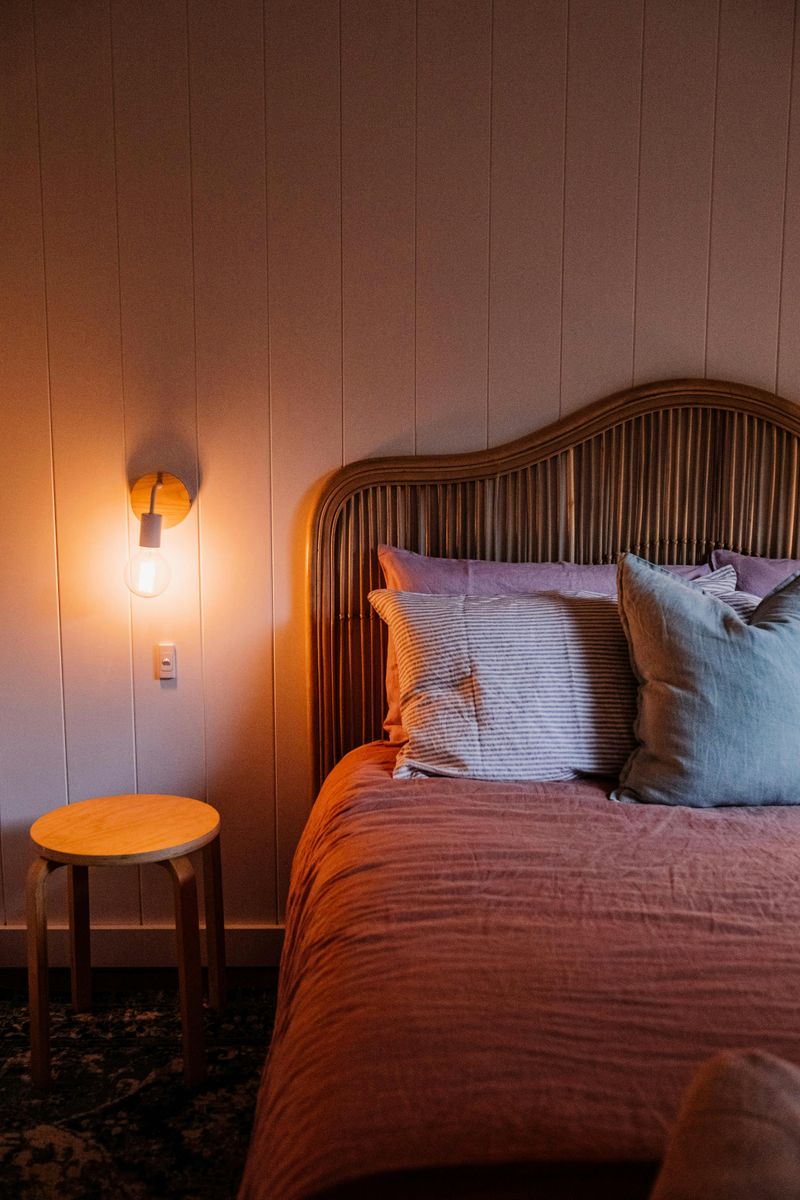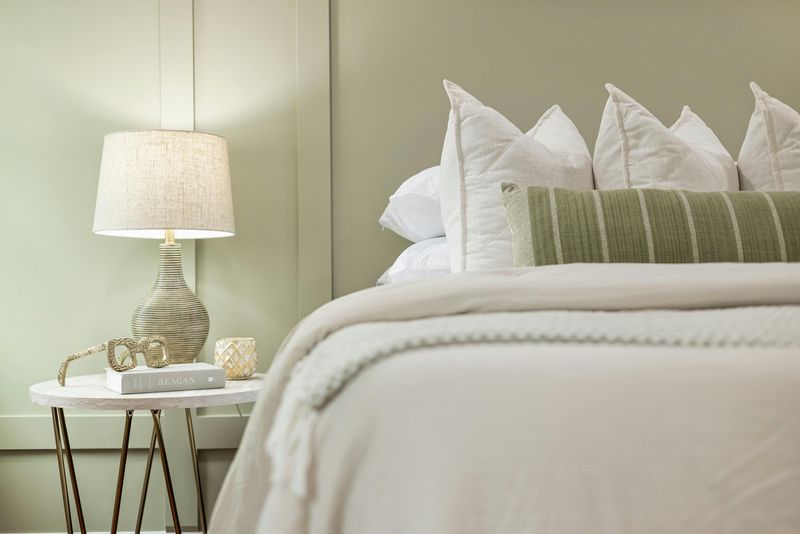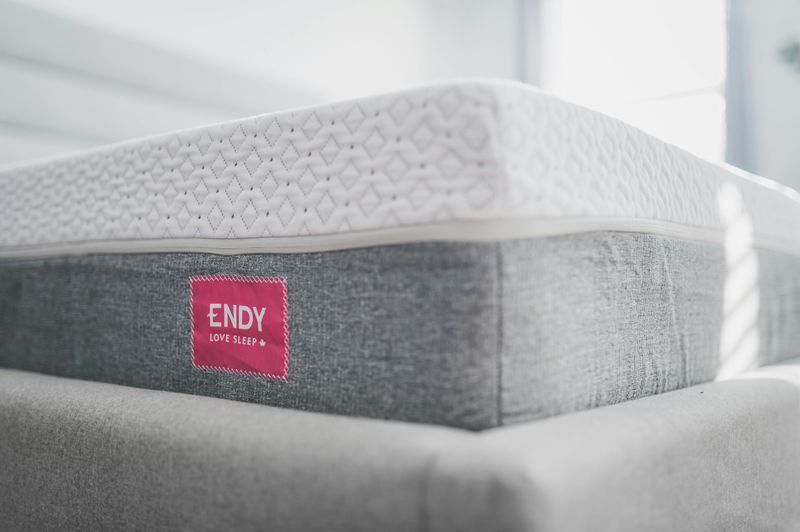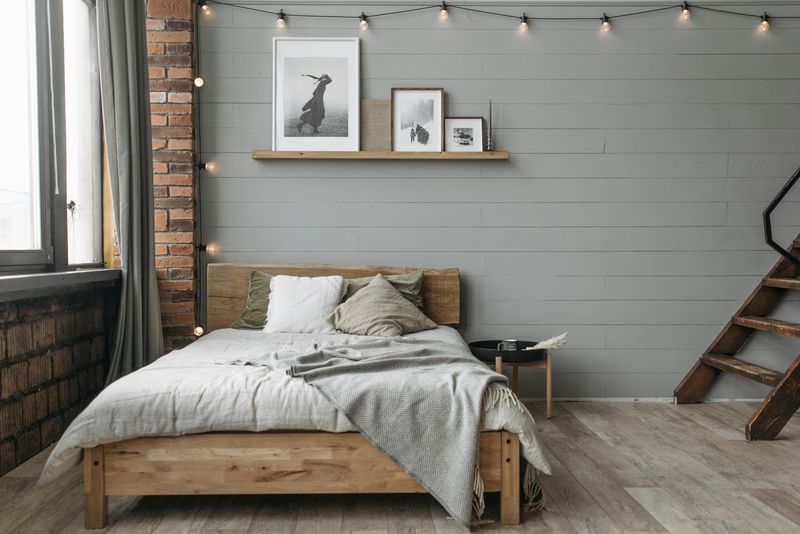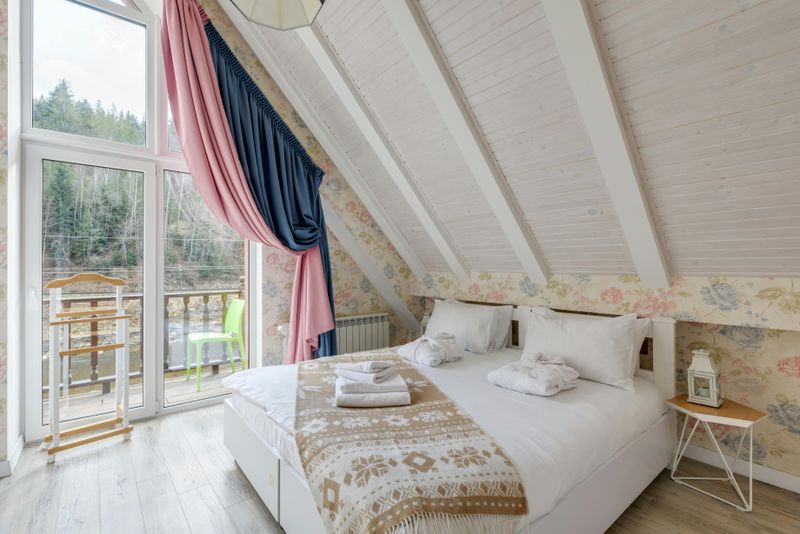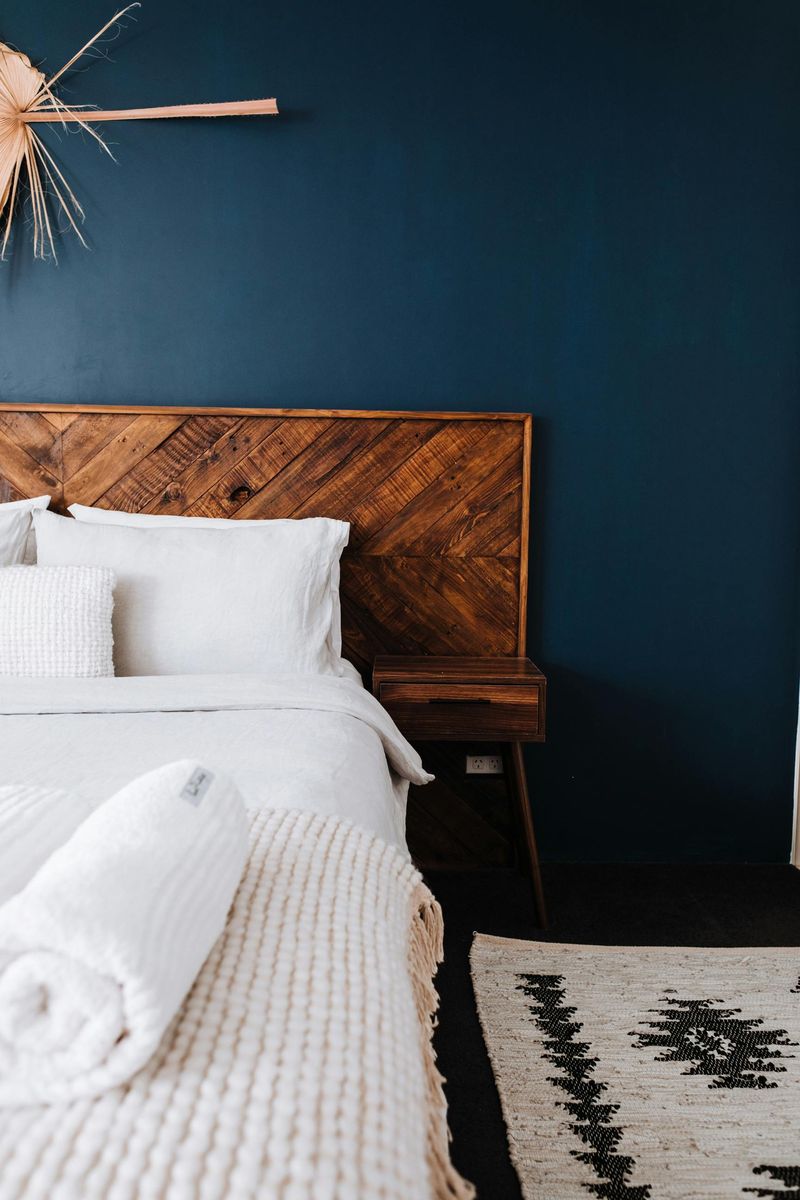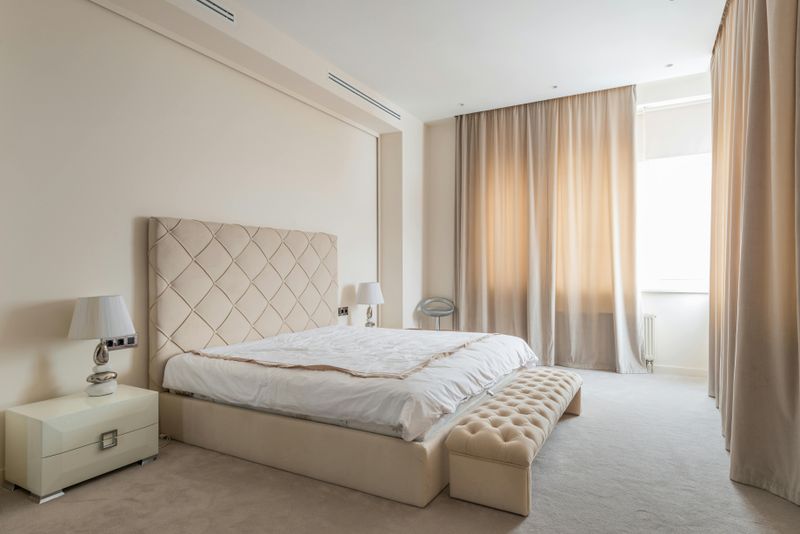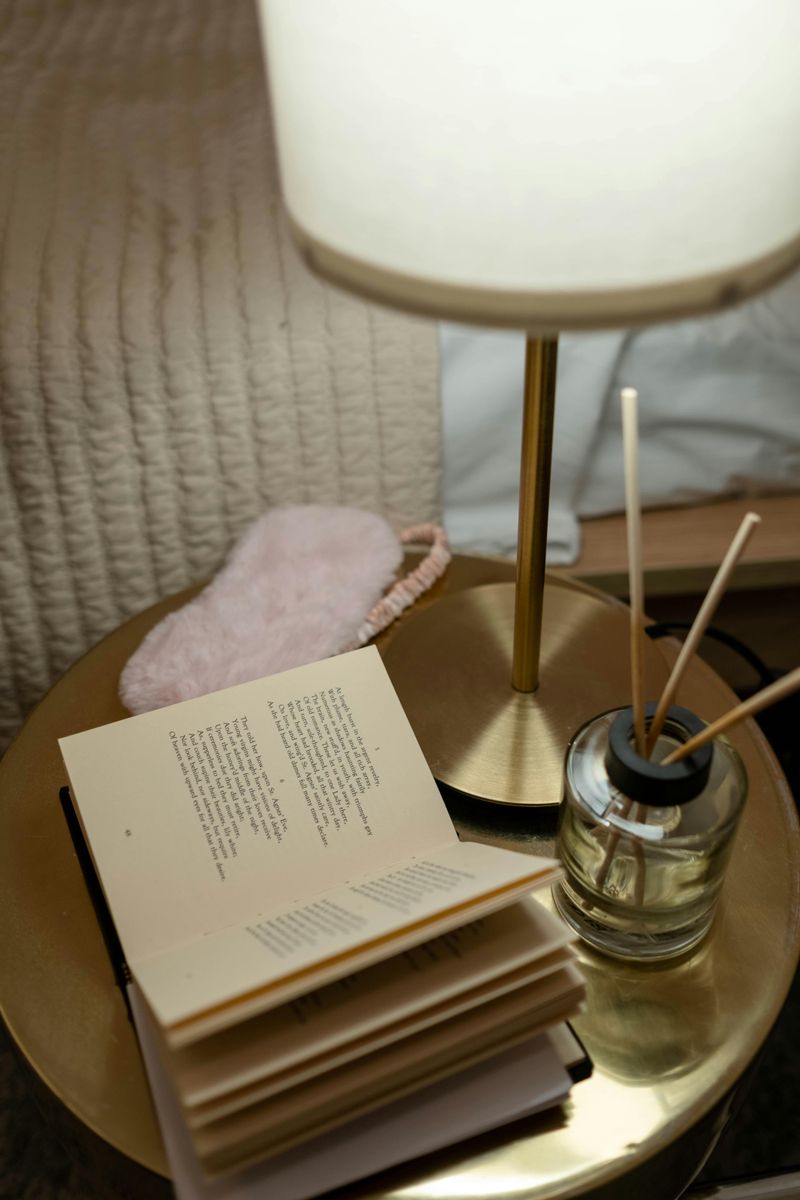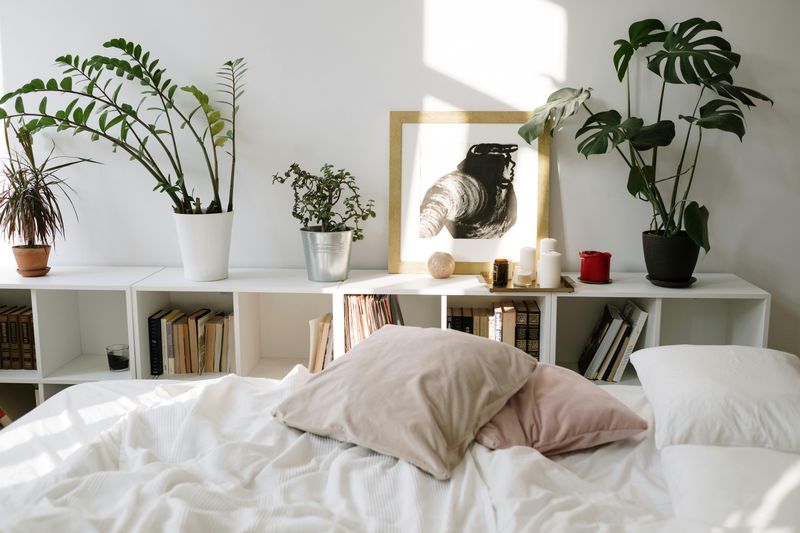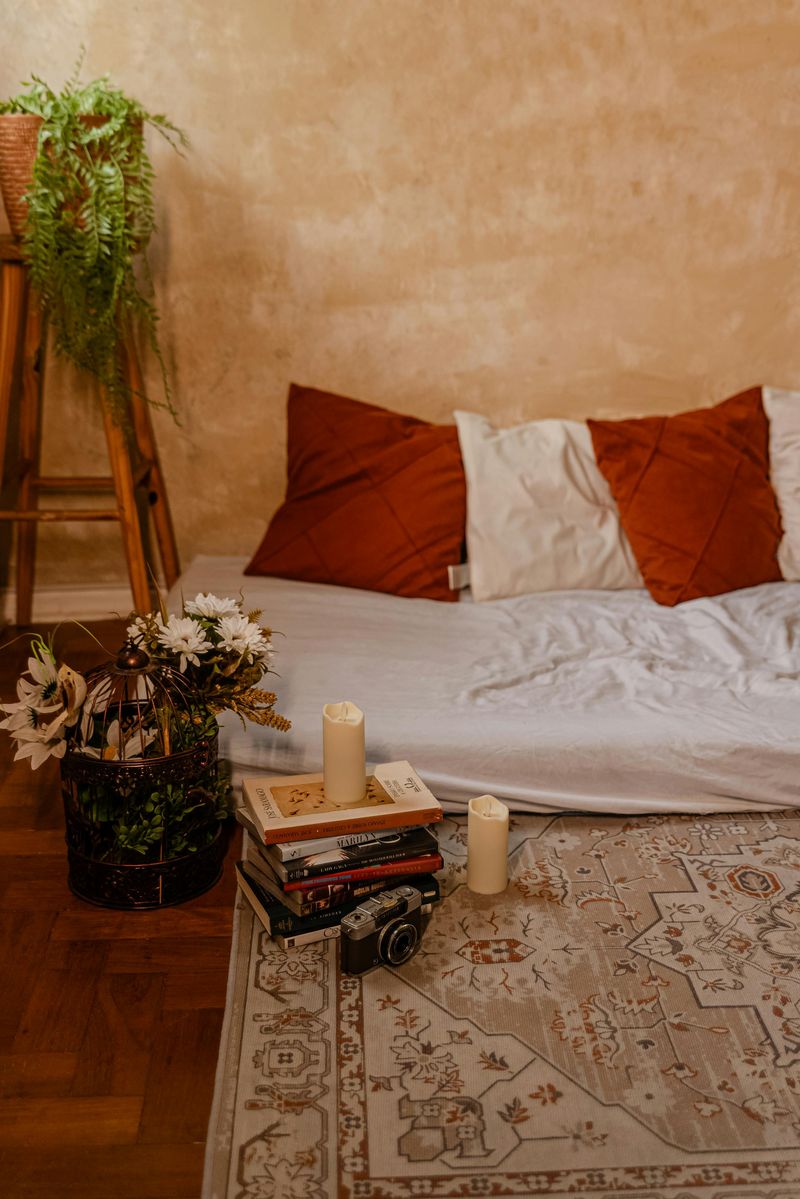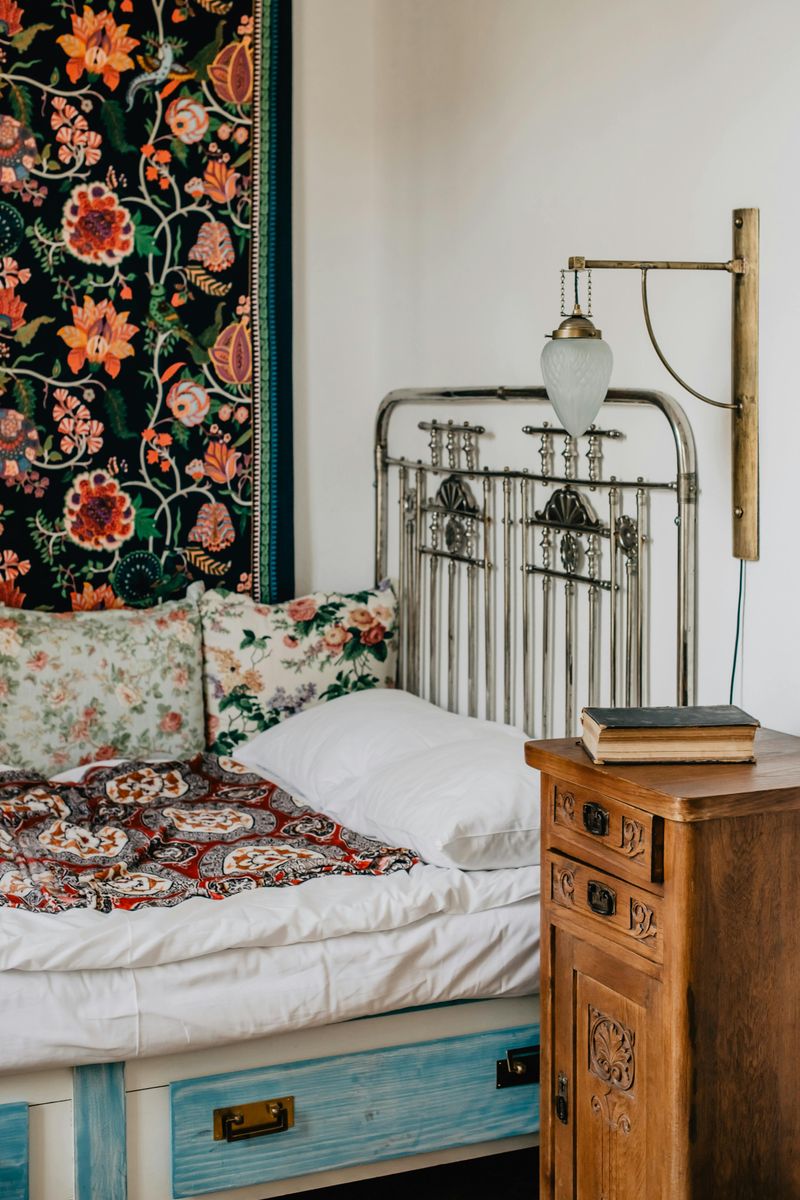Struggling to fall asleep at night? Your bedroom might be the culprit. Creating a sleep-friendly environment can make all the difference between tossing and turning or drifting peacefully into dreamland. These 12 cozy bedroom ideas will transform your space into a sleep sanctuary that helps you relax and unwind naturally.
1. Warm, Soft Lighting For Sweet Dreams
Harsh overhead lights tell your brain it’s daytime, making sleep difficult. Replace them with warm-toned lamps that create a gentle glow throughout your room.
Table lamps with fabric shades diffuse light beautifully, while dimmer switches let you gradually lower light levels as bedtime approaches. String lights draped along headboards or walls add a magical touch without being too bright.
Consider color temperature too—bulbs labeled ‘soft white’ or ‘warm white’ (2700-3000K) emit soothing amber tones that don’t interfere with melatonin production like cooler, bluer lights do.
2. Calming Color Palette For Peaceful Rest
Colors affect our mood and energy levels more than we realize. Soft blues mimic the sky, naturally lowering blood pressure and heart rate—perfect for pre-sleep relaxation.
Gentle greens connect us to nature, while lavenders contain subtle hints of calming blue with just enough warmth to feel cozy. Neutral tones like soft grays, taupes, and warm whites create a clean backdrop that soothes a busy mind.
Whatever palette you choose, avoid bright reds, oranges, or bold patterns in large doses—these energizing colors can make your brain too active for good sleep.
3. Quality Bedding That Feels Like A Cloud
Nothing beats sliding between sheets that feel amazing against your skin. Natural fibers like cotton, linen, and bamboo breathe better than synthetics, preventing the night sweats that wake you up.
Thread count matters less than quality—a well-made 300-thread count sheet often feels better than a cheap 1000-thread count option. Layer your bed thoughtfully: a supportive mattress, plush mattress topper, breathable sheets, and season-appropriate blankets.
Don’t forget pillows! Having options with different firmness levels lets you adjust for perfect neck support, while a weighted blanket can provide comforting pressure that reduces anxiety.
4. Natural Textures That Ground Your Senses
Wooden nightstands with visible grain patterns. Woven rattan lamp shades. Chunky knit throws. These natural textures do more than look good—they ground us by connecting to the organic world our ancestors knew.
Our fingertips contain thousands of nerve endings that respond positively to varied textures. A bedroom that offers this sensory richness—smooth cotton sheets, nubby linen pillowcases, velvety throws—creates a multi-dimensional experience that soothes our primitive brains.
Balance is key: mix 3-5 different textures without creating visual chaos. A room that feels harmoniously varied rather than cluttered sends subtle signals of safety to your brain.
5. Blackout Solutions For True Darkness
Even tiny amounts of light can disrupt your sleep cycle by suppressing melatonin production. Blackout curtains aren’t just for night shift workers—they benefit anyone seeking deeper sleep by creating cave-like darkness.
Modern options come in stylish designs that don’t scream “hotel room.” For maximum effectiveness, look for curtains that extend beyond your window frame and mount them higher and wider than the actual window. Can’t install permanent solutions? Try a well-fitted sleep mask made from natural fibers.
Don’t forget about sneaky light sources: digital clocks, charging devices, and hallway light seeping under doors. Address these with electrical tape, smart plugs, or door draft stoppers.
6. Temperature Control For Optimal Sleep
Your body temperature naturally drops as you fall asleep. A cool room—between 60-67°F (15-19°C)—helps this process along, signaling your brain that it’s time for rest.
Layer your bedding instead of cranking up the heat. This allows you to adjust throughout the night without waking fully. Consider breathable, temperature-regulating bedding materials like bamboo, linen, or specially designed cooling sheets for hot sleepers.
A ceiling fan creates gentle air movement without the harsh cold of air conditioning. For couples with different temperature preferences, try a dual-zone mattress pad or separate blankets to maintain harmony while keeping everyone comfortable.
7. Plush Rugs For Barefoot Comfort
Cold floors shock your system when you step out of bed, especially during midnight bathroom trips. Soft rugs create a gentle transition from the cozy bed to the floor, preventing that jolt that can make falling back asleep difficult.
Place a plush rug beside your bed that extends at least 2 feet on each side. Natural fibers like wool provide warmth while still allowing your feet to breathe. For extra luxury, layer rugs of different textures for visual interest and added cushioning.
Beyond comfort, rugs absorb sound, reducing echo and creating a quieter space that supports deeper sleep. They also define zones in your bedroom, psychologically separating sleep areas from other activities.
8. Clutter-Free Spaces For Mental Calm
Piles of laundry, stacks of books, and scattered items create visual noise that keeps your brain in active processing mode. Your bedroom should signal rest, not remind you of unfinished tasks.
Start with nightstands—limit them to essentials like a lamp, book, and water glass. Invest in closed storage for items you need but don’t want to see. Under-bed containers work wonderfully for seasonal clothing, while floating shelves keep floor space open, creating a sense of spaciousness.
The famous advice to avoid working in bed extends to your entire bedroom. When possible, keep work materials, exercise equipment, and hobby supplies in other rooms to maintain your bedroom as a dedicated sleep sanctuary.
9. Soothing Scents For Deep Relaxation
Lavender has earned its reputation as the sleep superstar—research confirms it lowers heart rate and blood pressure. But other scents like chamomile, sandalwood, and vanilla can be equally effective for creating a dreamy atmosphere.
Introduce these scents through natural methods rather than synthetic air fresheners. Linen sprays applied 15 minutes before bedtime allow overwhelming scents to dissipate while leaving just enough fragrance. Essential oil diffusers work well, but use them intermittently to prevent scent fatigue.
For a low-maintenance option, sachets tucked into pillowcases or dried lavender bundles hung near your bed provide subtle aromatherapy without electricity or flames.
10. Indoor Plants For Fresh, Oxygenated Air
Snake plants, peace lilies, and aloe vera don’t just look pretty—they work nighttime magic by releasing oxygen and filtering air while you sleep. NASA studies confirm certain plants remove toxins like formaldehyde and benzene from indoor air.
Place one medium-sized plant (or 2-3 smaller ones) in your bedroom for air-purifying benefits without overwhelming the space. Most bedroom-friendly plants thrive in indirect light and need minimal care—perfect for busy people or beginning plant parents.
Beyond air quality, the gentle presence of living plants creates a subtle connection to nature that many find deeply calming. Their organic shapes and varying shades of green provide visual rest from the hard edges and bright screens of modern life.
11. Reading Nook For Pre-Sleep Unwinding
Creating a dedicated reading corner signals to your brain that it’s time to transition from day to night. A comfortable chair with good back support, a small side table, and a warm-toned reading lamp create the perfect spot to lose yourself in a book.
Position your nook away from your bed if space allows. This physical separation helps maintain your bed as a place exclusively for sleep. Keep a basket of books nearby—physical books rather than e-readers, as the blue light from screens can interfere with melatonin production.
Even just 10-15 minutes of reading fiction before bed can lower stress hormones and prepare your mind for sleep. The ritual itself becomes a powerful sleep trigger over time.
12. Personal Touches That Bring Comfort
Family photos, travel mementos, and meaningful artwork create emotional anchors that signal safety to your subconscious mind. Choose items that evoke positive feelings rather than those that trigger stress or nostalgia that keeps you awake thinking.
Frame family photos in similar frames for a cohesive look, or create a small gallery wall of happy memories. Keep the arrangement simple—too many photos can create visual clutter that stimulates rather than calms the mind.
Childhood comfort objects deserve a place too. That special blanket or stuffed animal might seem silly, but familiar objects from our past activate deep comfort pathways in our brains, helping us relax into sleep more easily.

